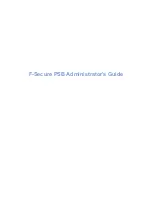
ACD contact center features
108 Communication Manager Guide to ACD Call Centers
BSR Detailed description
To use Best Service Routing on a single communication server, you simply use special
commands and command elements that are part of the call vectoring language. As a
result, BSR for a single location can be easily added to existing vectors without modifying
other parts of the communication server.
Multi-site applications work similarly, but additional administration is required. Since steps
in a multi-site BSR vector will contact one or more remote locations, you need to define
these locations, tell the communication server how to contact each one, and set up VDNs
and vectors to handle communications between the sending communication server and
each remote communication server.
Three VDN/vector pairs must be used in every multi-site BSR application. The Primary
VDN/vector pair, on the sending communication server, contacts the specified remote
communication server, collects information, compares the information, and delivers or
queues the call to the resource that is likely to provide the best service. Two VDN/vector
pairs are needed on each remote communication server. A Status Poll VDN/vector pair
provides information about the best resource at its location in response to inquiries from
BSR applications on other communication servers. Finally, an Interflow VDN/vector pair is
needed to receive and process the calls interflowed from BSR applications on other
communication servers.
Call surplus situations
Every BSR application compares a set of predetermined resources (splits/skills) and
selects the “best” resource to service the call. In a call surplus situation (no agents
available), the best resource is the split/skill with the lowest Expected Wait Time (EWT).
For purposes of calculating the best resource in a call surplus situation, BSR allows you to
adjust the EWT figure for any split/skill. The actual EWT for calls in queue isn’t changed, of
course; only the figure used in the calculations performed by the BSR feature is changed.
You don’t have to enter adjustments, but the ability to adjust the EWT for splits/skills allows
you to program preferences in vectors. Because of agent expertise, for example, or the
availability or cost of tie trunks, you might prefer that some resources not service a call
unless doing so significantly decreases the call’s time in queue.
It is possible for you to make adjustments to agent availability using the
consider
step.
Agent surplus situations
In an agent surplus situation (one or more agents available to take incoming calls), BSR
will deliver a new call according to the BSR Available Agent Strategy specified on the VDN
form. The “best” resource will be the split/skill that meets the criteria defined by the
strategy you’ve chosen for that VDN.
















































